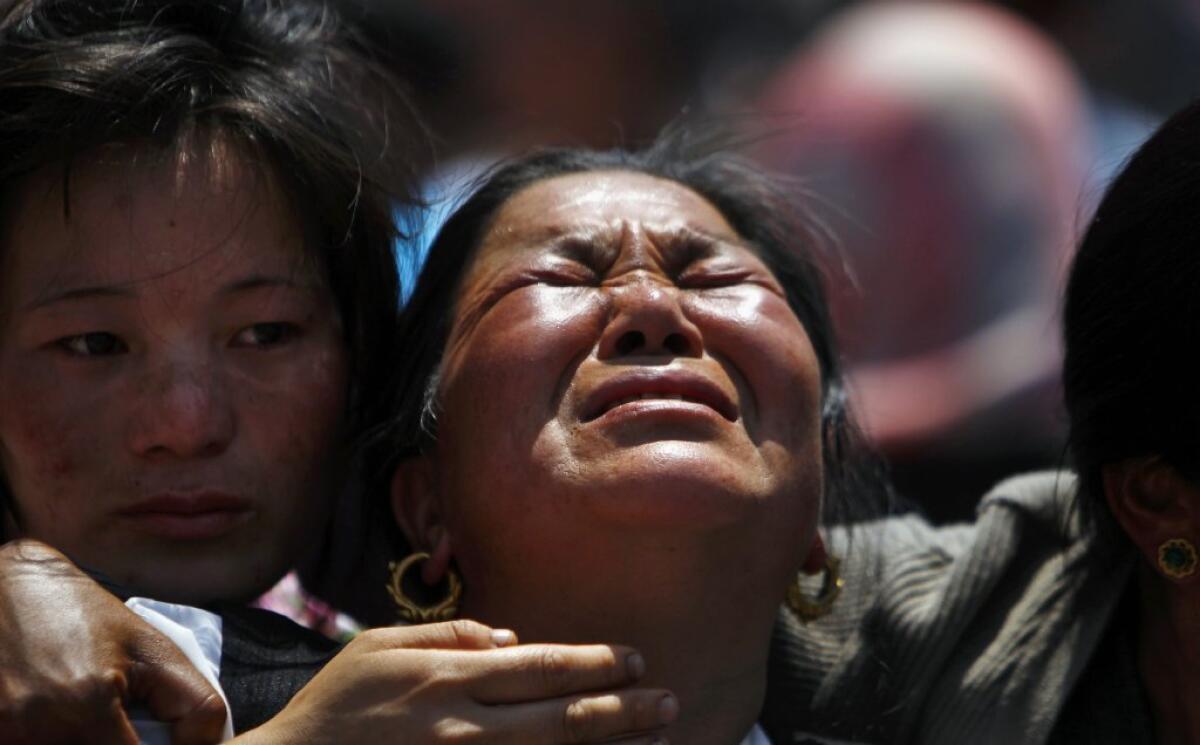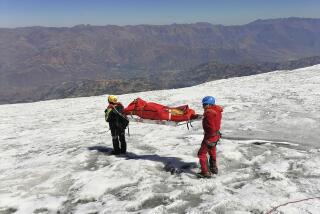Opinion: The underpaid and too-dangerous lives of Everest’s Sherpa guides

Just go home, climbers. The adventure of scaling Mt. Everest is not as important as the concerns of the Sherpa guides who lost 13 of their own — three more are missing and presumed dead — in an avalanche.
The guides are saying that they do not want to assist in any more climbs this year. They are mourning those who died, and they are fearful of conditions on the mountain.
Many climbers already are showing respect for the Sherpas’ situation, packing up for the year. But a few have indicated that they still plan to climb.
Fine. Just figure out a way to do it without the guides.
Not that anyone can force the Sherpas to work, but they’re under pressure from the government — the tourism brings in a lot of money — as well as facing the possibility that if they refuse to work this year, they will be unable to find guiding jobs in future seasons.
The entire situation is in need of overhaul. Sherpa guides make a fraction of the money that Western guides earn. Though they bring in several thousand dollars in a two-month climbing season — a lot of money in Nepal — that involves multiple trips up and down. More time on the mountain equals a higher risk of death or injury.
As an article last year in Outside magazine put it:
“A Sherpa working above Base Camp on Everest is nearly 10 times more likely to die than a commercial fisherman — the profession the Centers for Disease Control and Prevention rates as the most dangerous nonmilitary job in the U.S. — and more than three and a half times as likely to perish than an infantryman during the first four years of the Iraq war. As a dice roll for someone paying to reach the summit, the dangers of climbing can perhaps be rationalized. But as a workplace safety statistic, 1.2% mortality is outrageous. There’s no other service industry in the world that so frequently kills and maims its workers for the benefit of paying clients.”
The entire article is well worth reading.
Climbing Everest is a luxury undertaken only by those with $30,000 to $100,000 to spend on what most of us would consider a nonessential trip. The guides receive a very small chunk of that. If climbers can shell out this much cash, they can afford to pay a few thousand more to ensure that the guides are better compensated for each trip — allowing each to work fewer climbs per year — which would make their jobs at least somewhat safer. In addition, the insurance that climbers must pay to cover the guides in the event of an accident should be raised substantially.
But for now, any team that insists on going ahead with the climb must know that it’s being widely viewed as a group of rather spoiled, privileged brats. It is disappointing, sure, to have prepared, trained, hired, reserved and then have the whole thing fall apart. But it’s not crucial to fulfill plans for a recreational climb. For the Sherpas, it’s a matter of life and death.
ALSO:
Climbing Everest shouldn’t just be an item on someone’s bucket list
Tori Spelling’s ‘True Tori’ stars Dean McDermott as clueless husband
Fracking expert Mark Zoback: We need good science, good engineering, good regulations and good enforcement
More to Read
A cure for the common opinion
Get thought-provoking perspectives with our weekly newsletter.
You may occasionally receive promotional content from the Los Angeles Times.











